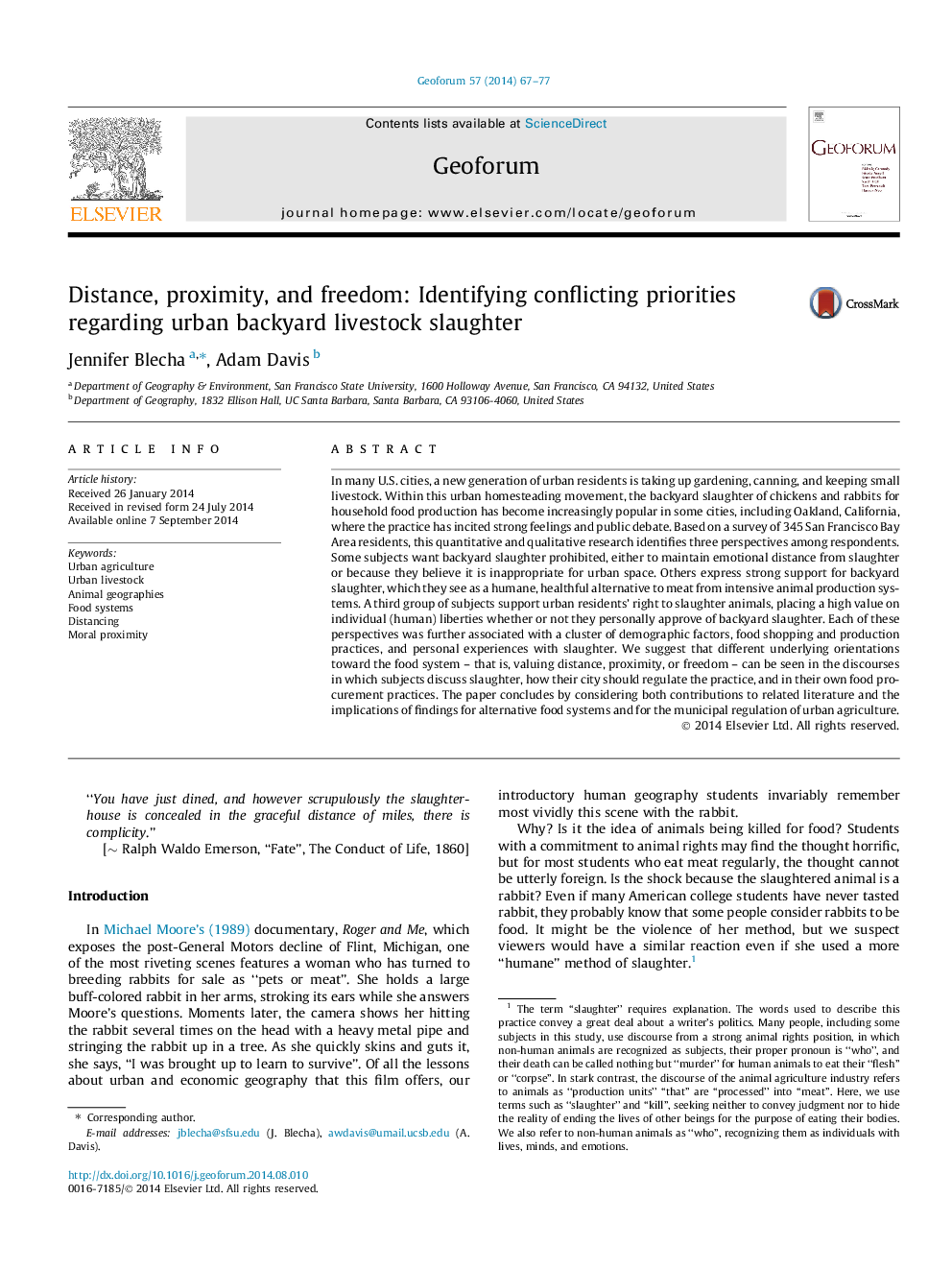| Article ID | Journal | Published Year | Pages | File Type |
|---|---|---|---|---|
| 5073938 | Geoforum | 2014 | 11 Pages |
â¢Backyard slaughter of poultry and small livestock is increasing in US cities.â¢The practice is controversial and urban residents hold conflicting views.â¢Three perspectives are identified among survey respondents' discourses.â¢Some subjects value proximity to their food sources and others value distance.â¢Subjects under age forty were more likely to support backyard slaughter.
In many U.S. cities, a new generation of urban residents is taking up gardening, canning, and keeping small livestock. Within this urban homesteading movement, the backyard slaughter of chickens and rabbits for household food production has become increasingly popular in some cities, including Oakland, California, where the practice has incited strong feelings and public debate. Based on a survey of 345 San Francisco Bay Area residents, this quantitative and qualitative research identifies three perspectives among respondents. Some subjects want backyard slaughter prohibited, either to maintain emotional distance from slaughter or because they believe it is inappropriate for urban space. Others express strong support for backyard slaughter, which they see as a humane, healthful alternative to meat from intensive animal production systems. A third group of subjects support urban residents' right to slaughter animals, placing a high value on individual (human) liberties whether or not they personally approve of backyard slaughter. Each of these perspectives was further associated with a cluster of demographic factors, food shopping and production practices, and personal experiences with slaughter. We suggest that different underlying orientations toward the food system - that is, valuing distance, proximity, or freedom - can be seen in the discourses in which subjects discuss slaughter, how their city should regulate the practice, and in their own food procurement practices. The paper concludes by considering both contributions to related literature and the implications of findings for alternative food systems and for the municipal regulation of urban agriculture.
